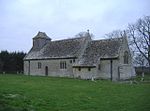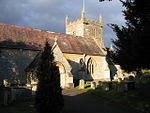Upper Waterhay Meadow
English Site of Special Scientific Interest stubsMeadows in WiltshireSites of Special Scientific Interest in WiltshireSites of Special Scientific Interest notified in 1971Use British English from June 2021 ... and 2 more
Wiltshire Wildlife Trust reservesWiltshire geography stubs
Upper Waterhay Meadow (grid reference SU068937) is a 2.8 hectare biological Site of Special Scientific Interest in north Wiltshire, England, notified in 1971. It lies on the Thames floodplain in Ashton Keynes parish, downstream (east) of Ashton Keynes village and west of the town of Cricklade. The site is known for the snakeshead fritillary, which occurs predominantly in its less common white form. Since it was bought by Wiltshire Wildlife Trust in 1970, the alluvial grassland has been managed for the benefit of the fritillaries.
Excerpt from the Wikipedia article Upper Waterhay Meadow (License: CC BY-SA 3.0, Authors).Upper Waterhay Meadow
Waterhay,
Geographical coordinates (GPS) Address Nearby Places Show on map
Geographical coordinates (GPS)
| Latitude | Longitude |
|---|---|
| N 51.642 ° | E -1.903 ° |
Address
4 Lakes Waterski School
Waterhay
SN6 6QY
England, United Kingdom
Open on Google Maps










